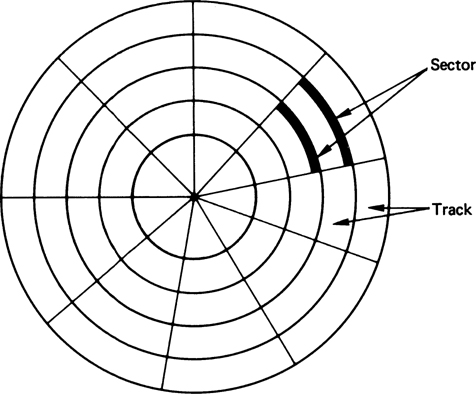Mass storage magnetic disk drives are addressed as large one-dimensional arrays of logical blocks, where the logical block is the smallest unit of transfer. The size of a logical block is usually 512 bytes, but by low lwvwl formatting the logical block size can be increased to 1,024 bytes.
The one-dimensional array of logical blocks is mapped onto the sectors of the disk sequentially. Sector 0 is the first sector of the first track on the outermost cylinder. We can convert a logical block number into an old-style disk address that consists of a cylinder number, a track number within that cylinder, and a sector number within that track.

In practice, it is difficult to perform this translation, for two reasons.
i> Most disks have some defective sectors, but the mapping hides this by substituting spare sectors
from elsewhere on the disk.
ii> The number of sectors per track is not a constant on some drives.
Let’s look more closely at the second reason. On media that use constant linear velocity (CLV), the density of bits per track is uniform. The farther a track is from the center of the disk, the greater its length, so the more sectors it can hold. As we move from outer zones to inner zones, the number of sectors per track decreases.
The drive increases its rotation speed as the head moves from the outer to the inner tracks to keep
the same rate of data moving under the head. This method is used in CD-ROM and DVD-ROM drives. Alternatively, the disk rotation speed can stay constant.
The density of bits decreases from inner tracks to outer tracks to keep the data rate constant. This method is used in hard disks and is known as constant angular velocity (CAV).


Comments
Post a Comment
Please comment.